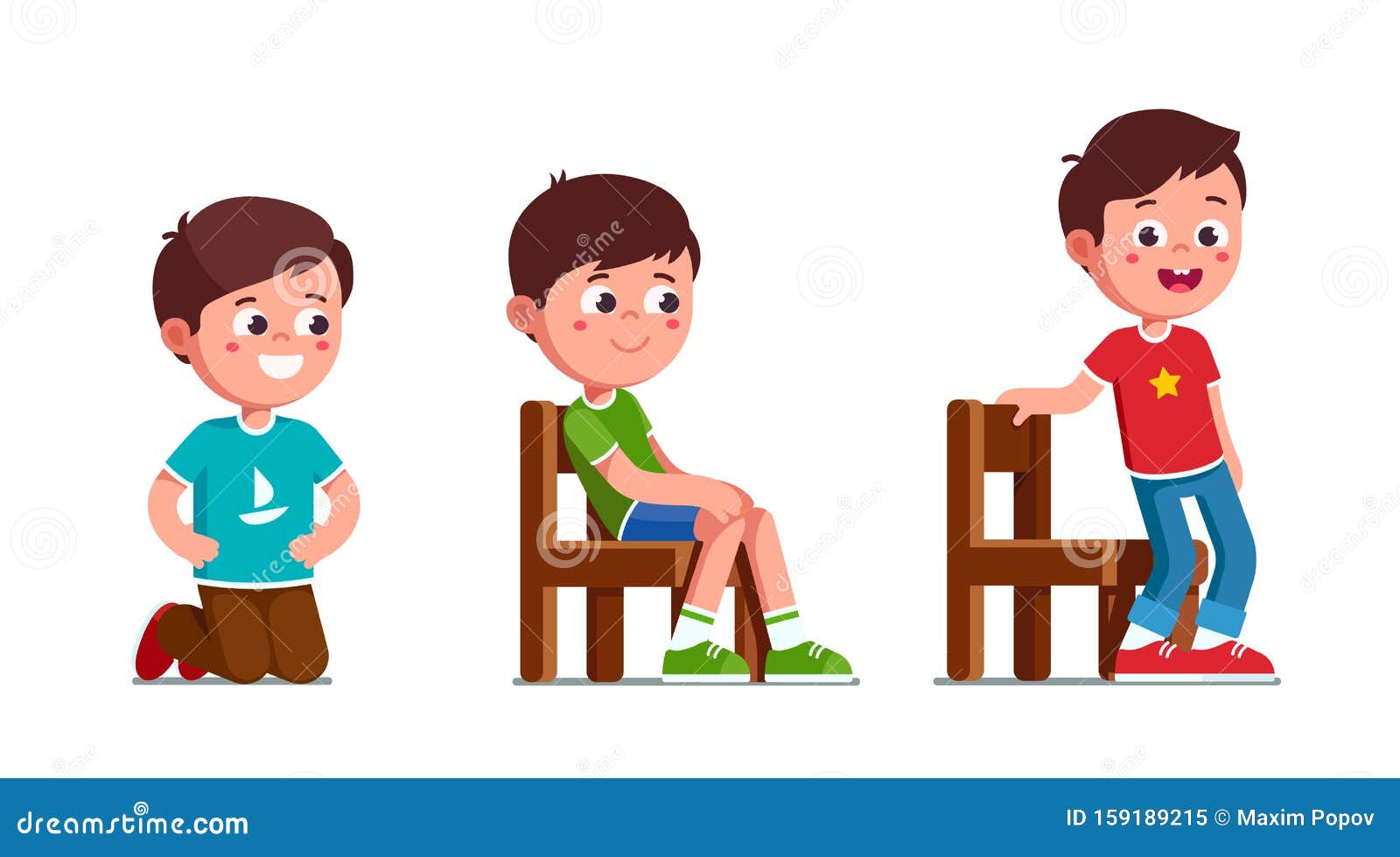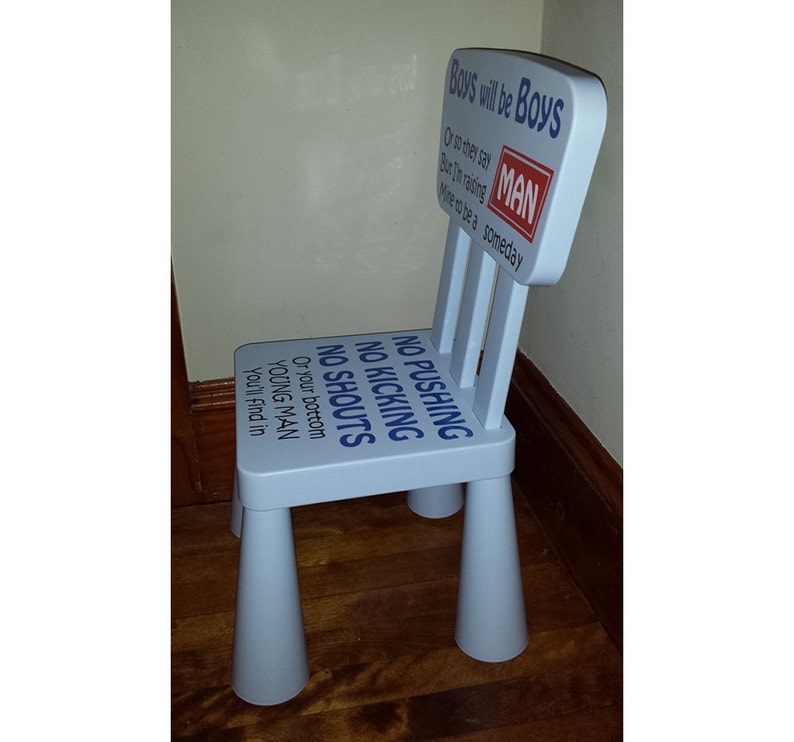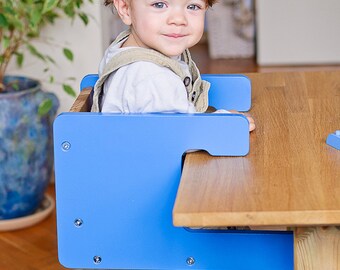

Just as with any other advice, please get your partner, grandparents on board first – you don’t want to confuse your little cherubs with inconsistent rules.Īt school, we use time out as a very last resort but at home, timeout can help you achieve results fast.ġ) Set a daily schedule and rules of the household – write it with your children if they are big enough to understand.
#Little boys time out chair how to#
Ask yourself whether you're projecting stress – a child will do provocative things to pull you out of your shell, even if it means risking your anger.Today I would like to look at the timeout technique and how to use it correctly. If you find that your child is especially provocative, it might be because they're experiencing stress or pressure, or simply because he's bored. Developmental ageĬhildren who are developmentally delayed or very advanced in cognitive skills may need to be treated based on their developmental age rather than their chronological age. For children who have experienced a lot of serious separations, time-outs bring up too much emotion, which overrides the learning opportunity. If your child is frantic or ill, he won't be able to learn from the time-out. This is hard because as the misbehaviour escalates, your natural tendency is to push back and even try to avoid him.

One approach is to 'catch him' being good. Be sure you save this scenario for the worst of 'crimes' rather than making it a habit. Go back to your child, state the reason for the time-out, and put him in time-out. If a time-out provides more attention to the child than he receives when he's behaving well, he'll continue to draw your attention with the provocative behaviour. A simple statement of the transgression when the 'crime' is committed followed by 'It's time for a time-out' is enough. This only confuses the child, adds to the tension and upsets everyone. Give him something new to do, a positive alternative to the forbidden activity. When the timer goes off, say, 'It's all done now', give him a hug, and leave it at that. If the child gets up, simply put him back in the chair and reset the timer. The duration should be about one minute per year of the child's age. Pick up the child and place him in the time-out seat.

How to carry it out Warn firstĪfter two warnings about the forbidden behaviour, announce, 'Okay, it's time for a time-out'. For example, the top of a staircase, near breakable items and next to a door that he can open are all NOT the places to choose. A bedroom also tends to contain too many distractions.īe sure the time-out location is a safe place where the child can be left alone without supervision. Try not to use a child's bedroom can it can create negative associations with a place that should be a safe haven. Being in the middle of things provides too much opportunity for compounding the problem with teasing and provocative behaviour. Be sure the place is away from care providers and the 'scene of the crime'. Place a chair in a safe but boring spot, such as the corner of a dining room or a rarely used entrance area. Resetting a child's expectations is harder than getting it right the first time, but it's still worth the time and energy.

This requires an initial investment of time that most parents find worthwhile. A time-out is meant to be a minor form of isolation that says, in effect, 'When you do this, you can't be a part of things'. Follow through on rulesĭuring a time-out, the child does not get to interact with the parent or care provider. Here's how to make time-outs an effective tool Consider your child's ageĮvery child is different, children younger than 18 to 24 months old don't really understand the concept, and older kids generally need more sophisticated ways to learn how to behave well. It's their chance to calm down, regroup and remember what is expected of them. A time-out is a period during which a child is removed from the troublesome situation or temptation.


 0 kommentar(er)
0 kommentar(er)
